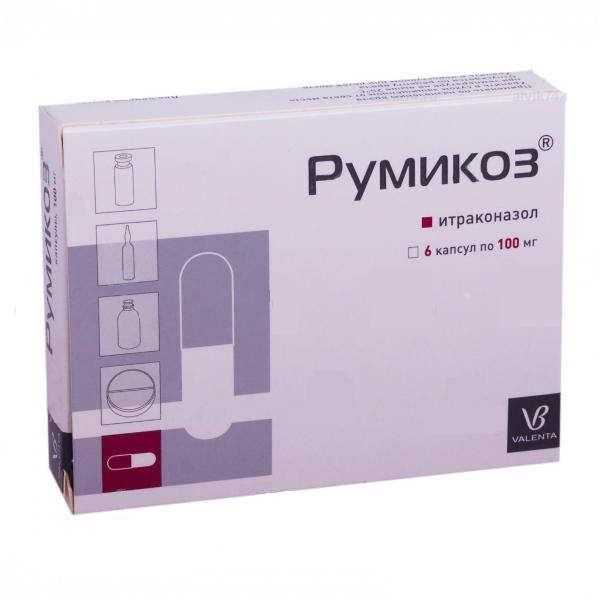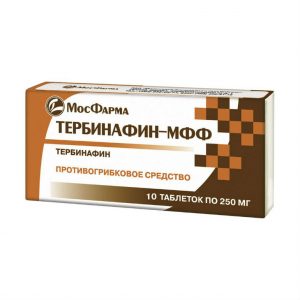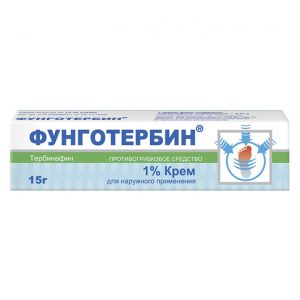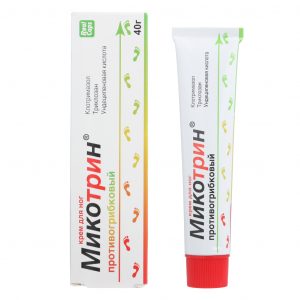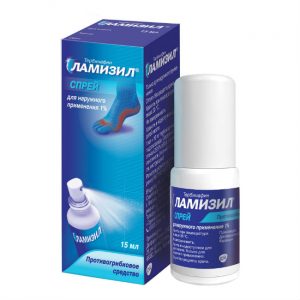Description
Packing
6 pcs
Pharmacological action
Rumikoz – a wide spectrum antifungal.
Pharmacodynamics
Synthetic broad-spectrum antifungal agent derived from triazole.
Inhibits the synthesis of ergosterol, an important component of the cell membrane of fungi.
Active against dermatophytes (Trichophyton spp., Microsporum spp., Epidermophyton floccosum), yeast-like fungi and yeast (Cryptococcus neoformans, Pityrosporum spp., Trichosporon spp., Geotrichum spp., Candida sppa., C. glida b. spp. and C. krusei), Aspergillus spp., Histoplasma spp., Paracoccidioides brasiliensis, Sporothrix schenckii, Fonsecaea spp., Cladosporium spp., Blastomyces dermatitidis, Pseudallescheria boydii, Penicillium marneffei, and other yeast fungi.
Pharmacokinetics
Absorption
When administered orally, the maximum bioavailability of itraconazole is observed when capsules are taken immediately after meals. Tmax in plasma – 3-4 hours after ingestion.
The distribution of
Css of itraconazole in plasma 3-4 hours after taking the drug is 0, 4 μg / ml (when taking 100 mg once a day), 1.1 μg / ml (when taking 200 mg once a day) and 2 μg / ml (when taking 200 mg 2 times a day). With prolonged use, Css is achieved within 1-2 weeks. Plasma protein binding is 99.8%.
Itraconazole penetrates well and is distributed in tissues and organs. The concentration of the drug in the lungs, kidneys, liver, spleen, bones, stomach, skeletal muscle is 2-3 times higher than the corresponding plasma concentration.
The accumulation of the drug in keratin tissues, especially in the skin, is about 4 times higher than the accumulation in plasma, and the rate of excretion depends on the rate of epidermal regeneration. Unlike plasma concentration, which is not detectable within 7 days after discontinuation of therapy, therapeutic concentration in the skin persists for 2-4 weeks after the termination of the 4-week course of treatment in the vaginal mucosa – within 2 days after the completion of the 3-day course of treatment at a dose of 200 mg once a day and for 3 days after the end of 1 -day course of treatment at a dose of 200 mg 2 times a day.
The therapeutic concentration of the drug in nail keratin is determined 1 week after the start of treatment and persists for 6 months after completion of a 3-month course of therapy. Itraconazole is also determined in the secretion of the sebaceous and sweat glands.
Metabolism
Metabolized in the liver with the formation of active metabolites, one of which – hydroxyitraconazole – has an antifungal effect comparable to that of itraconazole in vitro.
Excretion
Excretion from plasma is two-phase with a final T1 / 2 – 24 36 hours.
Excretion with feces is from 3 to 18% of the dose, by the kidneys – less than 0.03% of the dose is excreted in the form of metabolites with urine in within 1 week
Pharmacokinetics in special clinical cases
In patients with renal failure, as well as some patients with impaired immunity (eg AIDS, after organ transplantation, neutropenia), the bioavailability of itraconazole may be reduced. In patients with cirrhosis, the bioavailability of itraconazole is reduced, T1 / 2 is increased.
Indications
dermatomycosis
fungal keratitis
onychomycosis caused by dermatophytes and / or yeast and mold
systemic mycoses: systemic aspergillosis and candidiasis
cryptococcosis cryptococcosis cryptococcosis if first-line drugs are not applicable in this case or are not effective)
histoplasmosis
sporotrichosis
paracoccidioidomycosis
blastomycosis
other systemic or tropical mycoses
candidiasis with lesions of the skin and mucous membranes, including vulvovaginal candidiasis
deep visceral candidiasis
pityriasis versicolor.
Pregnancy and lactation
Pregnant women should be prescribed Rumikoz ® only in life-threatening cases if the expected benefit to the woman outweighs the potential risk to the fetus.
When prescribed during lactation, breast-feeding should be discontinued.
Composition
1 capsule contains:
Active ingredient:
itraconazole 100 mg
Excipients:
hypromellose
poloxamer (lutrol)
wheat starch
sugar.
Dosage and administration
Dosage regimen is individual.
Side effects of
From the gastrointestinal tract: dyspepsia, nausea, vomiting, decreased appetite, abdominal pain, diarrhea, constipation.
From the hepatobiliary system: a reversible increase in the activity of hepatic transaminases, hepatitis is very rare – severe toxic damage to the liver, including acute fatal liver failure.
From the nervous system: headache, dizziness, peripheral neuropathy.
Allergic reactions: skin rash, pruritus, urticaria, angioedema, rarely erythema multiforme exudative (Stevens-Johnson syndrome).
From the skin: alopecia, photosensitivity.
Other: menstrual irregularities, hypokalemia, edema syndrome, congestive heart failure and pulmonary edema, hypercreatininemia, staining of urine in a dark color.
Drug interaction
drugs affecting the absorption of itraconazole
Gastric juice acidity reducing drugs, reduce the absorption of itraconazole.
drugs affecting the metabolism of itraconazole
Itraconazole is mainly cleaved by the CYP3A4 enzyme. When itraconazole is co-administered with rifampicin, rifabutin, phenytoin, carbamazepine, isoniazid, which are potent inducers of CYP3A4, the bioavailability of itraconazole and hydroxyitraconazole is significantly reduced, leading to a significant decrease in efficacy. Concomitant use of Rumikosa ® with these drugs, which are potential inducers of hepatic enzymes, is not recommended.
Powerful inhibitors of the CYP3A4 enzyme (eg ritonavir, indinavir, clarithromycin, erythromycin) may increase the bioavailability of itraconazole.
Effect of itraconazole on the metabolism of other drugs
Itraconazole may inhibit the metabolism of drugs, cleaved by CYP3A4 enzyme. The result may be an increase or prolongation of their action, including and side effects. After discontinuation of Rumikoz ® treatment, the plasma concentration of itraconazole decreases gradually, depending on the dose and duration of treatment (see Pharmacokinetics). This should be taken into account when discussing the inhibitory effect of itraconazole on concomitant drugs.
drugs, which are not recommended at the same time as Rumicosis ®
BPC. In addition to the possible pharmacokinetic interaction associated with a common metabolic pathway involving the CYP3A4 enzyme, BPC may have a negative inotropic effect, which is enhanced when co-administered with Rumikoz ®.
Drugs for which simultaneous administration is recommended to monitor their plasma concentrations, action, side effects. If necessary, the dose of these drugs should be reduced, if necessary:
some immunosuppressive agents (cyclosporine, tacrolimus, sirolimus (also known as rapamycin)
some HMG-CoA reductase inhibitors cleaved by CYP3A4 (atorvastatin)
ekotor e corticosteroids (budesonide, dexamethasone and methylprednisolone)
Other Preparations: digoxin, carbamazepine, buspirone, alfentanyl, alprazolam, brotyzolam, for midazolam / w of administering a, rifabutin, ebastin, reboksetyn, tsylostazol, dyzopyramyd, Ñletryptan, halofantrine, repaglinide.
No interaction was found between itraconazole, zidovudine and fluvastatin.
The effect of itraconazole on the metabolism of ethinyl estradiol and norethisterone was not noted.
In vitro studies have demonstrated no interaction between itraconazole and drugs such as imipramine, propranolol, diazepam, cimetidine, indomethacin, tolbutamide, and sulfamerazine when bound to plasma proteins.
Overdose
No data available.
Treatment:
with an accidental overdose, gastric lavage should be carried out within the first hour, with activated charcoal if necessary. Itraconazole is not excreted in hemodialysis. There is no specific antidote for the drug.
Storage conditions
The drug should be stored in a dry, dark place and out of the reach of children at a temperature not exceeding 25 ° C.
Expiration
3 Year
Conditions of supply of pharmacies
Prescription
Capsule Dosage Form A dosage form
capsules
Valenta Pharma, Russia
